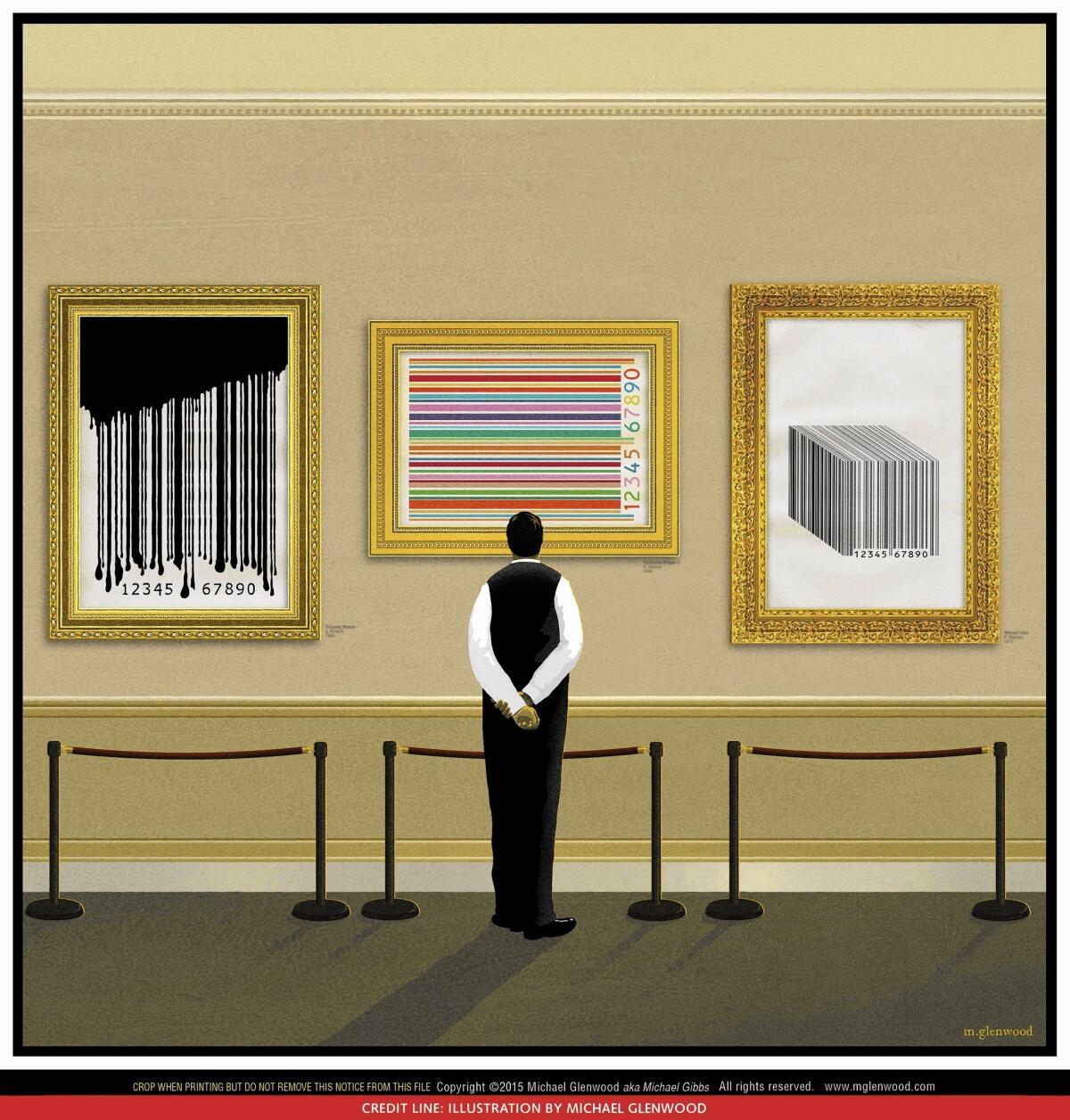Readers React: When art and commerce mix in museums

- Share via
Art museum dealings
The Fine Arts Museums of San Francisco — the de Young and the Legion of Honor — suffer from having a very powerful, wealthy philanthropist, Dede Wilsey, as board president for nearly 20 years [“Profit Motif,” July 19]. Wilsey’s son Trevor Traina is also on the board, which resembles a herd of sheep in its passivity and unquestioned allegiance to her. The museums are currently without a permanent director, as it is understandably difficult to recruit capable people given the situation. It took nearly two years to fill the slot after the last director died, and his replacement, Colin Bailey, lasted only a few months before resigning.
Morale is low and many of the curatorial staff are worried about the lack of direction and poor leadership. It is unheard of for museum board presidents to serve 20 years, for good reason. There is more, all part of a sad, sad story, but very few who know the details would ever risk speaking out.
Ian Berke
San Francisco
So take away art museums’ nonprofit status. Same as in name only nonprofit hospitals that rake in the money but don’t use much of it to help the indigent. Same as mega churches that rake in millions so the pastors can build mansions.
Carol May
Los Angeles
::
In his article, Christopher Knight suggests that I am commercializing my relationship with the Fine Arts Museums to sell access to my art collection for profit and that I am the beneficiary of nepotism, as my mother was the board chair when the museum hosted an exhibition from my collection.
The author omits the significant fact that my website IfOnly is a charity website and that the access I am offering to my collection is to raise money for a charity benefiting innercity poor in the Bay Area. This omission is so significant that it is not plausible it is a mere oversight. It literally changes the whole premise of the story.
The author cites an earlier story from the San Francisco Chronicle about possible nepotism in regards to a show of my works. That story was not accurate either. Although my mother was on the board on the time (as was I), the show was in response to a request from the director, who wanted to launch a photography program. At the time, I was the only major collector of photography associated with the museum. Neither curator was being paid by me at the time (as is alleged in the story) and both are among the very top in their field.
While I can’t speak to the parts of this story that don’t affect me, if my part was so misleadingly inaccurate, I can only imagine what other errors there may be.
Trevor Traina
San Francisco
::
In Knight’s critique of museum commercialization, he cites nine examples. This letter is about the “Samurai!” exhibition at the Worcester Art Museum (WAM) in Massachusetts. My work is in the exhibition.
WAM recently acquired Japanese materials from the Higgins Armory Museum, which WAM absorbed after the latter’s closing in 2013. To draw attention to these materials, it sought a guest curator to put together an exhibition that complemented its holdings.
It selected Eric Nakamura, founder of Los Angeles’ GR2 Gallery and Giant Robot Store, which have showcased works by Asian artists and artists working with Asian themes since 1994. It may be the only such gallery in the U.S. It seems a logical choice; Nakamura has a deep knowledge of contemporary Japanese-themed art.
-----------
For the Record
July 27, 2:45 p.m.: An earlier version of this letter was edited to say that the Giant Robot Store and GR2 Gallery are in Santa Monica. They are in Los Angeles.
-----------
The majority of the artists in “Samurai!” are not Giant Robot artists. Of 19 in it, six are represented by the gallery. Nakamura’s inclusion of a majority of artists he doesn’t represent undermines the argument that commercialization has tainted or weakened the exhibition.
Moira Hahn
Long Beach
About that incorrect ‘the’ ...
You misquoted William Faulkner in your article on the documentary [“Victims Have Their Say in ‘Look of Silence,’” July 19]. The correct quote is “The past is never dead. It’s not even past,” not “The past is never dead; it’s not even the past.” Adding a “the” turned the second “past” from Faulkner’s adjective into a noun, altering the meaning.
Faulkner says the past is always here, now, alive. Moreover, the original quote is not one long sentence, separated by a semi-colon after “dead.” It is two sentences. The first comes to an emphatic end after “dead.” If Faulkner had wanted to stick these clauses in a single, longer sentence, he would have been perfectly capable of doing so.
Doug Lane
English department
Santa Monica College
A little applause for ‘Dreamgirls’
I enjoyed the article about director-writer Bill Condon [“No Mystery to Wildly Eclectic Film Choices,” July 12]. But you forgot to mention his work on “Dreamgirls.” Not only did Jennifer Hudson win an Oscar, but Eddie Murphy was also nominated, among other nods. And it grossed more than $100 million.
Mike Bailey
Los Angeles
More to Read
The biggest entertainment stories
Get our big stories about Hollywood, film, television, music, arts, culture and more right in your inbox as soon as they publish.
You may occasionally receive promotional content from the Los Angeles Times.










